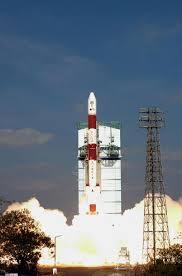India Poised for A New High with PSLV-C7 Launch Feat
India’s space research programme has leaped to a new high with the successful launch of the Polar Satellite Launch Vehicle (PSLV-C7) from Sriharikota, Andhra Pradesh, carrying four satellites, including a recoverable spacecraft on January 10, 2007. This group of four satellites constituted of two Indian makes and two foreign satellites. The foreign satellites belong to the category of micro and nano satellites weighing 56 and six kg respectively. Undoubtedly, both Indonesian and Argentinean governments must be now satisfied with choosing the right agency (ISRO) to send their satellites into orbit. The Indian “birds” to go into orbit are Cartosat-II, a 680-kg mapping satellite, and Space Capsule Recovery Experiment (SRE), weighing 550 kg.
Cartosat II is the second satellite in the series (Cartosat-I was launched in May 2005), providing a resolution of 1 meter against the 2.5 meters resolution of Cartosat I. Also, the cost of this imagery would be six to seven times cheaper. These images would provide digital elevation maps useful for development projects and resource management. Naturally, such high-resolution imagery is bound to have its utility for the defence forces too.
The most important feature of this mission is the launch of SRE whose success would be really established when it safely lands in the Bay of Bengal on 22 January. SRE is on a multi-role mission. In the space it would remain for a period between 13 to 30 days at an approximate altitude of 625 km. During this period the capsule is expected to carryout microgravity experiments namely, an isothermal heating furnace (IHF) and a bio-mimetic (bio-mineralization of inorganic materials).
However, the biggest challenge would be the last phase of this mission. This stage is critical because it would test the re-entry technology when the capsule enters from outer space to the earth’s atmosphere, experiencing searing temperatures. The history of space launches shows that this phase is very critical. In 2003, Indian-born astronaut Kalpana Chawla, along with other crew members, lost their life because the shuttle Columbia disintegrated upon reentry into the Earth's atmosphere. It was unable to sustain the high temperatures during the reentry phase
SRE has an indigenously developed thermal protection system. Silica tiles have been used for reducing the impact of heat during the SRE's descent through the atmosphere. The durability of these tiles will be known after the capsule is de-orbited and brought back to the earth. Presently, ISRO’s future plan entirely hangs on the performance this thermal protection system.
Before launch of this capsule ISRO has conducted many experiments to test the strength of the capsule. Two models of the reentry capsule were successfully tested in the Plasma Wind Tunnel belonging to CIRA (Italian Centre for Aerospace Research) in Capua during 2006. During the test, a hypersonic speed of Mach 8 (one Mach is equivalent to the speed of sound) was reached, with a thermal flow of 2500 KW/m2, the highest ever reached to date in the Scirocco plasma wind tunnel, while temperatures in the order of 2000°C were tried out on the nose of the capsule during the 150 seconds of exposure to the flow. It has been reported that the results of these tests were satisfactory.
The space capsule is expected to enter the earth’s atmosphere with the speed of around 100 miles per second which needs to be reduced almost to the tune of 12 miles per second to cushion the impact of the landing at sea. For this speed reduction three parachutes would be used. Three airdrop tests of the SRE module were successfully conducted using a helicopter in 2004 from Sriharikota to test the strength of these parachutes. The SRE module with three parachutes was dropped from a height of 5 km and the tests were found acceptable.
This mission is the first step of ISRO’s ambitious plan of sending a man to the moon by 2020. If this test becomes successful, then ISRO proposes to start sending unmanned vehicles to space, master the technique and then send a human being to space by 2015 and subsequently attempt the moon mission. The primary aim of ISRO with all these experiments is to put the capsule in outer space with the help of the rocket and recover it on the runway like an aircraft. Mastering this reusable launch vehicle (RLV) technology has long-term strategic relevance for the country.
The PSLV launch has definitely proved that ISRO means business. By successfully launching foreign satellites (they have done this in the past, too), they have showcased to the world their expertise in the arena of ‘launch capability’. In the field of satellite imagery, they are now the second best in the world. Most importantly, by putting the capsule in outer space, they have demonstrated their determination to reach the moon.
A successful landing by SRE into the Bay of Bengal, approximately 140 km east of Sriharikota and subsequent recovery by Coast Guard personnel will definitely give a major boost to India’s space programme.
